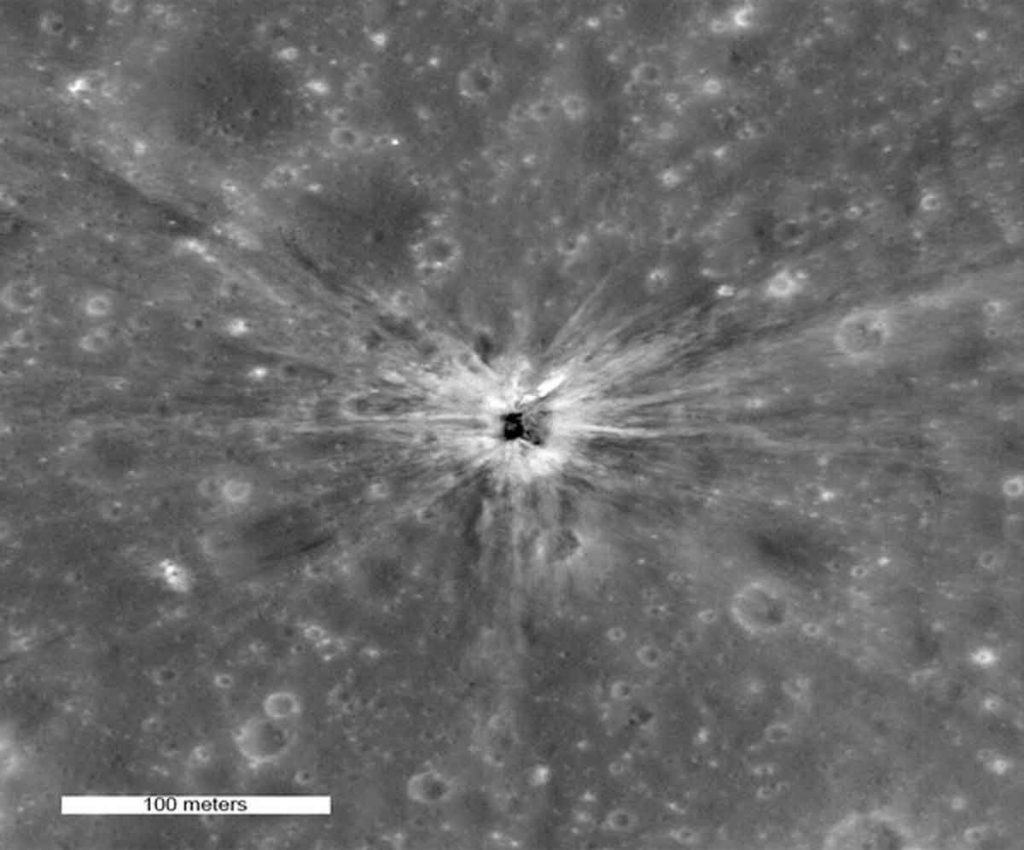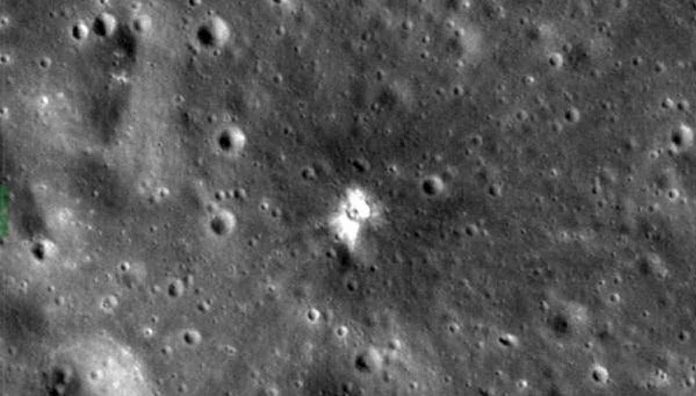The sudden appearance of a new impact crater on the moon is going to happen on March 4. A derelict SpaceX Falcon 9 rocket will crash into it.
The rocket was launched in 2015. The rocket carried NASA’s Deep Space Climate Observatory (DSCOVR) probe into a position 1.5 million kilometres from the Earth, facing the Sun. The expended upper stage of the rocket had insufficient speed to escape into an independent orbit around the Sun. It was abandoned without an option to steer back into the Earth’s atmosphere. It will allow stages to burn up on re-entry. It will reduce the clutter in near-Earth space caused by dangerous junk.
The 14 meters long, derelict upper stage massed nearly four tons since February 2015. It has therefore been in a wide orbit about the Earth. Its movements have been hard to predict. As they were influenced by lunar and solar gravity as well as the Earth’s.
It is going to hit the moon on March 4 at a speed of about 2.6 kilometres per second. This will make a crater about 19 meters in diameter. This is a prospect that has provoked outrage in social media circles from people who are appalled that human negligence will disfigure the moon in this way.
Misplaced concern
It is environmentally friendly for a dead rocket to end up on the moon. Otherwise, it will be scattered through Earth’s upper atmosphere in the form of metal oxide particles. The moon also lacks an atmosphere to shield it from space debris. So, it is accumulating naturally occurring impact craters all the time.
The Lunar Reconnaissance Orbiter has already imaged a 19-meter crater. It has formed when a half a ton lump of asteroid rock traveling about ten times faster than the Falcon 9 struck the surface in March 2013. Hundreds of smaller impacts have been spotted by NASA’s lunar impact monitoring project.
We won’t be able to see it happen as the coming impact will be on the lunar far side. But spacecraft orbiting the moon will be able to image the impact.
The larger upper stages of rockets used in the Apollo landing missions were crashed. The vibrations detected by seismometers installed on the surface could be used to investigate the lunar interior. The Apollo seismometers were turned off long ago. This is not clear whether the seismometer on China’s Chang’e 4 far side lunar lander will be able to provide any useful data this time.
A deliberate crash was also achieved in 2009 when NASA’s LCROSS mission sent a projectile into a permanently shadowed polar crater. This made a smaller crater on its icy floor. It thrown up a plume that proved to contain the hoped-for water vapor.
Biological contamination
We should worry about contaminating the moon with living microbes or molecules. It could be in the future be mistaken as evidence of former life on the moon.

Most nations have signed up to planetary protection protocols that seek to minimize the risk of biological contamination from Earth to another body. The ethical argument is that it would not be right to put at risk any ecosystem. The scientific argument is that we want to study and understand the natural conditions on each other body. We should not risk compromising or destroying them by wanton contamination.

